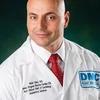Too often, massive and submassive pulmonary emboli (PEs) are undertreated, or not treated at all. In 2014, Detroit Medical Center (DMC) launched Clotbusters to improve outcomes for these patients. Today, Clotbusters patients have a mortality rate of 10-14 percent, compared with 60 percent for patients treated with usual care.
Many patients with PE die before they arrive at a hospital. Those who come to the emergency department (ED) frequently are misdiagnosed with myocardial infarction (MI). These patients are directed down the acute coronary syndromes pathway, and the resulting delay in PE treatment can be fatal. Another scenario has ED and intensive care physicians resorting to systemic anticoagulation, which prevents the clot from progressing but doesn’t break up the existing clot. Our study of more than 1,500 patients hospitalized with acute PE found that patients treated with systemic thrombolysis had higher in-hospital mortality and intracranial hemorrhage than patients treated with catheter-directed thrombolysis (Catheter Cardiovasc Interv 2015;86[7]:1219-27).
Launch of Clotbusters
Using DMC's STEMI program as a model, we created a PE response team of interventional cardiologists, nurses, cardiovascular technologists and radiation therapists. We developed an algorithm that activates a universal pager that alerts our team, available 24/7, of a suspected PE. When paged, the team mobilizes to treat massive or submassive
PE aggressively. Nearly all patients are treated with ultrasound-accelerated catheter-directed thrombolysis, which delivers about 25 percent of the standard dose of tissue plasminogen activator (tPA) used for systemic thrombolysis. We also use other catheter-directed technologies based on PE severity and hemodynamic status.
As of this spring, more than 200 patients had benefited from the Clotbusters program, and we had generated one of the largest registries in the United States of patients with massive and submassive PEs. We are collecting data on mortality rates, recurrent PEs, incidence of pulmonary hypertension after massive PE, quality of life and rates of behavior modification after PE. Preliminary data indicate that 90 percent of our patients change behaviors to prevent recurrent PEs.
We aired a radio advertisement to inform the public about the warning signs of PE. The ad has been successful in two ways: More people with PE have come to our ED before they are hemodynamically unstable, and every hospital in southeast Michigan has referred massive and submassive PE patients to our hospital, secure in the knowledge that we have the expertise and resources to treat these patients.
PE response programs needed
Any major hospital with a cath lab and an interventional cardiologist, interventional radiologist or vascular surgeon can implement a PE response program like Clotbusters. Interest in the program is high, as it should be, because PE is now the third most common cause of death in the United States, after MI and stroke.
With aggressive treatment, we can improve mortality rates for patients with massive PE. As more physicians employ advanced technologies to treat PE, we will be able to share treatment and outcomes data to further improve the therapies we offer our patients.
Mahir Elder, MD, is the medical director of the Cardiac Care Unit and Ambulatory Services Program and director of Cardiac CT Angiogram at DMC, clinical associate professor of medicine and assistant program director of Interventional Fellowship at Wayne State University School of Medicine, and director of Endovascular Medicine at DMC University Hospital.
